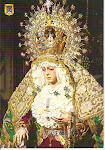
Russian Christmas
Thirteen days after Western Christmas, on January 7th, the Russian Orthodox Church celebrates its Christmas, in accordance with the old Julian calendar. It's a day of both solemn ritual and joyous celebration
After the 1917 Revolution, Christmas was banned throughout Russia, along with other religious celebrations. It wasn't until 75 years later, in 1992, that the holiday was openly observed. Today, it's once again celebrated in grand fashion, with the faithful participating in an all-night Mass in incense-filled Cathedrals amidst the company of the painted icons of Saints.
Christmas is one of the most joyous traditions for the celebration of Eve comes from the Russian tradition. On the Eve of Christmas, it is traditional for all family members to gather to share a special meal. The various foods and customs surrounding this meal differed in Holy Russia from village to village and from family to family, but certain aspects remained the same.
An old Russian tradition, whose roots are in the Orthodox faith, is the Christmas Eve fast and meal. The fast, typically, lasts until after the evening worship service or until the first star appears. The dinner that follows is very much a celebration, although, meat is not permitted. Kutya (kutia), a type of porridge, is the primary dish. It is very symbolic with its ingredients being various grains for hope and honey and poppy seed for happiness and peace.
Once the first star has appeared in the sky, the festivities begin. Although all of the food served is strictly Lenten, it is served in an unusually festive and anticipatory manner and style. The Russians call this meal: "The Holy Supper." The family gathers around the table to honor the coming Christ Child. A white table-cloth, symbolic of Christ's swaddling clothes, covers the Table. Hay is brought forth as a reminder of the poverty of the Cave where Jesus was born. A tall white candle is place in the center of the Table, symbolic of Christ "the Light of the World." A large round loaf of Lenten bread, "pagach," symbolic of Christ the Bread of Life, is placed next to the Candle.
The meal begins with the Lord's Prayer, led by the father of the family. A prayer of thanksgiving for all the blessings of the past year is said and then prayers for the good things in the coming year are offered. The head of the family greets those present with the traditional Christmas greeting: "Christ is Born!" The family members respond: "Glorify Him!" The Mother of the family blesses each person present with honey in the form of a cross on each forehead, saying: "In the Name of the Father and of the Son and of the Holy Spirit, may you have sweetness and many good things in life and in the new year." Following this, everyone partakes of the bread, dipping it first in honey and then in chopped garlic. Honey is symbolic of the sweetness of life, and garlic of the bitterness. The "Holy Supper" is then eaten (see below for details). After dinner, no dishes are washed and the Christmas presents are opened. Then the family goes to Church, coming home between 2 and 3 am. On the Feast of the Nativity, neighbors and family members visit each other, going from house to house , eating, drinking and singing Christmas Carols all the day long.
Why January 7?
In ancient times, many, mostly unreliable methods had been used to calculate the dates according to either the lunar or solar cycles. By Roman times, the calendar had become three months out with the seasons, so in 46 BC, Julius Caesar commissioned the astronomer, Sosigenes to devise a more reliable method. This, we know as the Julian Calendar and was used widely for 1500 years. The month of his birth, Caesar had named Quintilis, but the Roman Senate later re-named it Julius (July) in his honour. In those days, February had 30 days every 4 years.
However, this calendar was still 11 minutes and 14 seconds longer than the solar year, so that by the year 1580, the calendar had accumulated 10 days off again. In 1582, therefore, Pope Gregory XIII corrected the difference between the sun and calendar by ordering 10 days dropped from October, the month with the least Roman Catholic Feast days. His calendar, we know as the Gregorian Calendar, which is used in almost all of the world today. Pope Gregory made further changes to keep the calendar in line, which on average is only 26.3 seconds longer than the solar year. The Gregorian Calendar is so accurate that it will take until the year 4316 to gain a whole day on the sun.
That year, 1582, October 5th became October 15th and was immediately adopted in most Roman Catholic nations of Europe. Various German states kept the Julian Calendar until 1700. Britain and the American Colonies didn't change until 1752, but Russia and Turkey did not adopt the Gregorian Calendar until the early 1900's.
So, January 7th by the Georgian Calendar would have been December 25th by the old Julian Calendar and is therefore why it is still Christmas Day for the Russian Orthodox Church. Many Russians will have celebrated along with the rest of us and will then celebrate again on the Orthodox date.












No comments:
Post a Comment